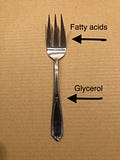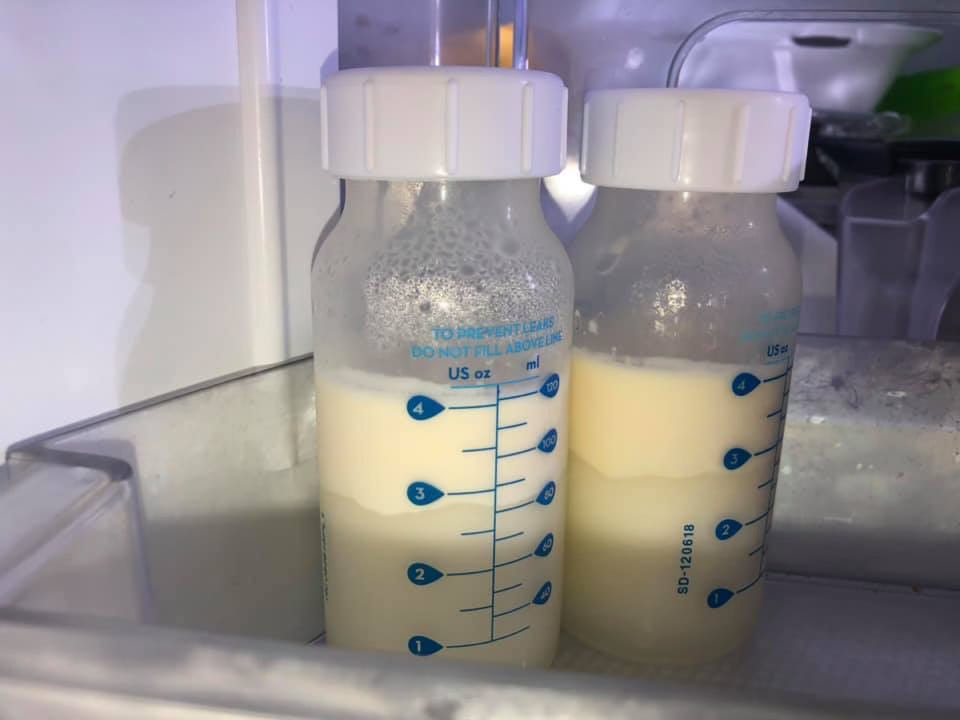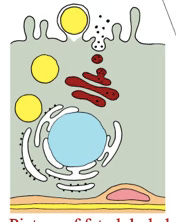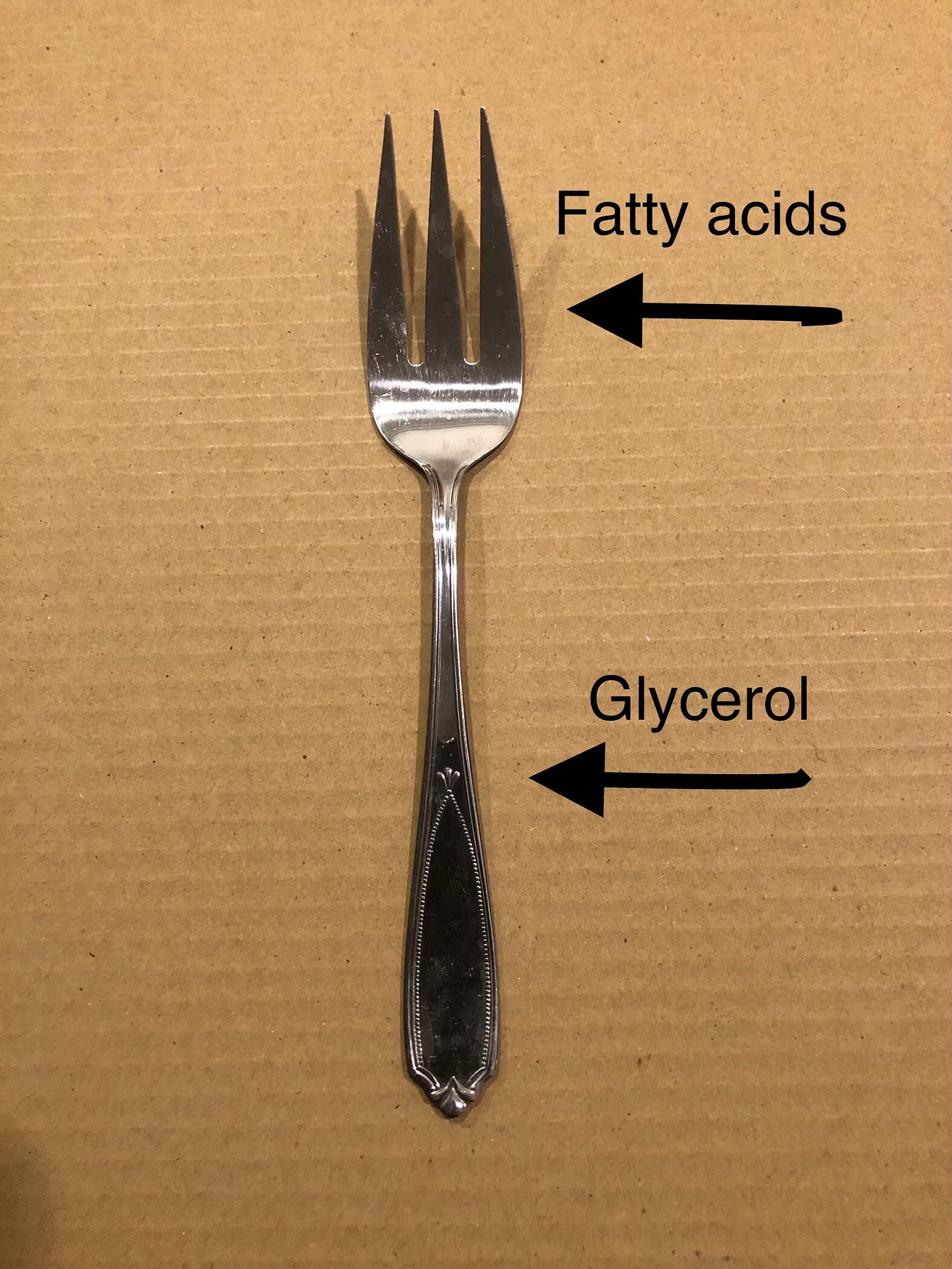Previous posts reviewed two of the macronutrients in human milk, carbohydrates and proteins - now onto fats.
The fats in human milk are fascinating and so important for the infant’s health - but difficult to understand. Do you agree? Let’s see if we can add some clarity to this important topic. While they are not exactly the same, I will use the terms ‘fats’ and ‘lipids’ interchangeably.
Fat facts
The fats found in human milk provide 50% of the infant’s energy needs.
The average fat content of human milk is about 4%, BUT fats in human milk are the most highly variable macronutient. Fat content varies a lot, for example: from the start of a breastfeed to the end, according to the time of day a feed occurs, from one breast to another, and from one mother to another.
Fats are the second greatest solid constituent in human milk: #1) lactose, #2) fats, #3) human milk oligosaccharides.
The initial milk of a feed is referred to as foremilk; the last milk of the feed is referred to as hindmilk. Usually hindmilk contains more fat than foremilk. However, the following statement is always true: the fat content of human milk is directly related to the relative fullness or emptiness of the breast. Milk in a fuller breast = lower fat. Milk in an almost empty breast = higher fat.
Human milk contains more unsaturated than saturated fat - with a ratio of 57% unsaturated fat to 42% saturated fat.
Lipid levels significantly increase in the second year of lactation.
One of the characteristics of fat is that it is insoluble in water. If you leave human milk out to stand for a while, it will layer out. Human milk stored in a refrigerator often looks like the picture below, with the fat layered on top of the watery or aqueous portion of the milk.
The fat globule
The yellow circle you see in the diagram below represents a fat globule in a lactocyte. Most of the fat in human milk is in the form of triglycerides. To be exact, the breakdown of the lipids found in human milk is:
Triglycerides (98%)
Phospholipids (0.8%)
Cholesterol (0.5%)
Remember the Fork
When you are trying to remember facts about fats in human milk, Remember the Fork. The glob of fat, i.e. the triglyceride molecule, consists of three fatty acids bound to a glycerol molecule. Using the fork analogy, the handle of the fork is the glycerol molecule and each prong of the three-prong fork represents a fatty acid.
High contents of palmitic acid and oleic acid
Human milk fat is characterized by high contents of palmitic acid and oleic acid. Thinking of our triglyceride fork, palmitic acid is heavily concentrated in the 2nd prong position and oleic acid is often found in the 1st and 3rd prong positions.
Triglycerides are broken down by the enzyme, lipase, into glycerol and the free fatty acids. The fats found in breast milk are well utilized because of three sources of lipase: 1) in the milk, 2) under the baby’s tongue, and 3) in the infant’s intestinal track.
Milk fat globule membrane
It is also important to understand a few facts about the membrane that wraps around the fat globule. Let’s look are where the fat found in human milk is made. Once we understand that then the membrane makes sense.
Where is the fat in human milk produced? Once again, it is the hard-working lactocyte that is responsible. Remember that lactocytes are the cells that line the alveolar sac of the mammary gland. In lactating breasts there are many (thousands? tens of thousands? - not sure, let’s say a lot) lactocytes. They may be small in size, but they are powerful and multifaceted. The milk fat globule is manufactured by a variety of components within the lactocyte, and then, when the fat globule is being expelled from the lactocyte into the milk space, it is wrapped in the membrane obtained from the lactocyte.
In the diagram below, the yellow circle is the fat globule and you can see it get wrapped by a membrane as it pops out of the lactocyte and into the milk space.
The wrapping, or the outer coat, is a unique triple membrane called the Milk Fat Globule Membrane or MFGM for short. The MFGM is made up of a diverse group of highly bioactive components: glycoproteins, cerebrosides, gangliosides, cholesterol and bioactive peptides.
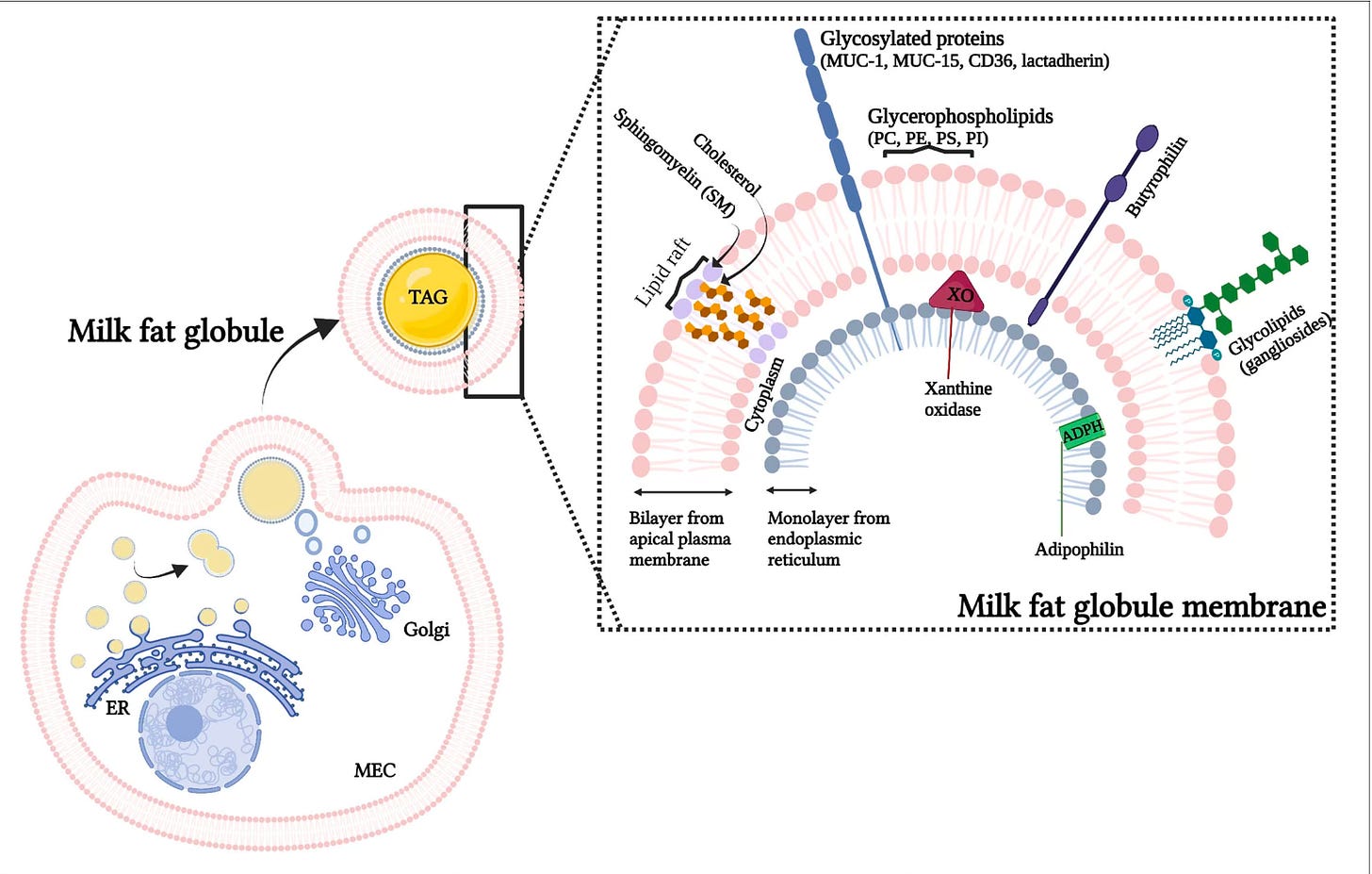
The key lipid species of the MFGM are phospholipids. Milk phospholipids have important functional properties influencing general lipid absorption, brain development, gut mucosal development, and immune maturation. (4)
Another of the functions of the membrane coating is that it prevents the clumping of fats.
The second post on the fats in human milk will look into essential fatty acids and the role they play in human development.
Stay tuned!
References
Core Curriculum for Lactation Consultant Practice, 3rd edition. Edited by Rebecca Mannel, Patricia J. Martens, and Marsha Walker. 2013. Jones & Bartlett Learning.
Lawrence RA, Lawrence RM. Breastfeeding: A Guide for the Medical Profession, 7th edition. 2011. Mosby, Elsevier.
Wambach K, Spence B. Breastfeeding and Human Lactation, 6th edition. 2021. Jones & Bartlett Learning.
Thum C. Changes in milk fat globule composition throughout lactation: A review. Frontiers in Nutrition. May 2022.
Tema #12. Grasas Parte 1: Recuerda el tenedor
Las grasas de la leche humana son fascinantes pero difíciles de entender. ¿Estás de acuerdo? Veamos si podemos aportar algo de claridad a este importante tema. Aunque no son exactamente lo mismo, utilizaremos los términos "grasas" y "lípidos" indistintamente.
Datos sobre las grasas
El contenido medio de grasa de la leche humana es de aproximadamente un 4%.
Las grasas que se encuentran en la leche humana proporcionan el 50% de las necesidades energéticas del lactante.
Los lípidos son el segundo componente principal de la leche humana (por porcentaje de concentración): #1) la lactosa, #2) los lípidos, #3) los oligosacáridos.
Los lípidos de la leche humana son el macronutriente más variable. El contenido en lípidos varía desde el inicio de la toma hasta el final, según el momento del día en que se produce la toma, de un pecho a otro y de una madre a otra.
La última leche de la toma se denomina leche final; la leche del principio de la toma se denomina leche inicial. Normalmente, la leche final contiene más grasa que la inicial. Sin embargo, siempre se cumple que: el contenido de grasa de la leche humana está directamente relacionado con la llenura o el vacío relativo del pecho. Leche en un pecho casi vacío = más grasa; leche en un pecho más lleno = menos grasa.
La leche humana contiene más grasas insaturadas que saturadas, con una proporción del 57% de grasas insaturadas frente al 42% de grasas saturadas.
Los niveles de lípidos aumentan significativamente en el segundo año de lactancia.
Una de las características de la grasa es que no es soluble en agua. Si se deja la leche materna fuera para que repose durante un tiempo, se formarán capas. La leche materna almacenada en el frigorífico suele tener el aspecto de la imagen siguiente, con la grasa en capas sobre la parte acuosa de la leche.
Glóbulo de grasa
El círculo amarillo que ves en el diagrama siguiente representa un glóbulo de grasa en un lactocito. La mayor parte de la grasa de la leche humana se encuentra en forma de triglicéridos. Para ser exactos, la descomposición de los lípidos que se encuentran en la leche humana es:
Triglicéridos (98%)
Fosfolípidos (0,8%)
Colesterol (0,5%)
Recuerda el tenedor
Cuando quieras recordar datos sobre las grasas de la leche humana, Recuerda el Tenedor.
Cada molécula de triglicéridos está formada por tres ácidos grasos unidos a una molécula de glicerol. Utilizando la analogía del tenedor, el mango del tenedor es la molécula de glicerol y cada punta del tenedor de tres puntas representa un ácido graso.
Aunque se han identificado 190 ácidos grasos diferentes, los principales son el ácido palmítico, el ácido oleico, el ácido esteárico y el ácido linoleico. La grasa de la leche humana se caracteriza por su alto contenido en ácido palmítico y oleico. Si pensamos en el tenedor de los triglicéridos, el ácido palmítico está muy concentrado en la posición de la segunda punta y el ácido oleico suele encontrarse en las posiciones de la primera y la tercera punta.
La enzima lipasa descompone los triglicéridos en glicerol y ácidos grasos libres. Las grasas que se encuentran en la leche materna se aprovechan bien gracias a tres fuentes de lipasa 1) bajo la lengua del bebé, 2) en la leche materna y 3) en el tracto intestinal del bebé.
Membrana del Glóbulo de Grasa de la Leche o MFGM
¿De dónde proviene la grasa de la leche humana? ¿Dónde se produce?
Una vez más, el responsable es el laborioso lactocito. Recuerda que los lactocitos son las células que recubren el saco alveolar de la glándula mamaria. En los pechos lactantes hay muchos (¿miles, millones?) lactocitos. Pueden ser pequeños, pero son poderosos y multifacéticos. El glóbulo de grasa de la leche es fabricado por una variedad de componentes dentro del lactocito, y luego, cuando el glóbulo de grasa está siendo expulsado del lactocito a la leche, se envuelve en la membrana obtenida del lactocito.
En el diagrama a continuación, el círculo amarillo es el glóbulo de grasa y puede verlo envuelto por una membrana a medida que sale del lactocito y entra en el espacio de la leche. Crédito: The Journal of Pediatrics. 2016;173(Supplement):S60-S65. Ilustración de Erik Domellof.
La envoltura, o la capa exterior, es una triple membrana única llamada Membrana del Glóbulo de Grasa de la Leche o MFGM por sus iniciales en inglés.
La MFGM está formada por un grupo diverso de componentes altamente bioactivos: glucoproteínas, cerebrósidos, gangliósidos, colesterol y péptidos bioactivos.
Una de las funciones de la membrana de recubrimiento es que impide la aglutinación de las grasas.
El segundo post sobre las grasas de la leche humana tratará sobre los ácidos grasos esenciales y el papel que desempeñan en el desarrollo humano.
¡Estén atentos!
Referencias
Core Curriculum for Lactation Consultant Practice [Plan de estudios básico para la práctica del consultor de lactancia], 3ra edición. Editado por Rebecca Mannel, Patricia J. Martens y Marsha Walker. 2013. Jones & Bartlett Learning.
Lawrence RA, Lawrence RM. Breastfeeding: A Guide for the Medical Profession [Amamantar: Una guía para la profesión médica], 7ma edición. 2011. Mosby, Elsevier.
Wambach K, Spencer B. Breastfeeding and Human Lactation [Amamantamiento y lactancia humana], 6ta edición. 2021. Jones & Bartlett Learning.

